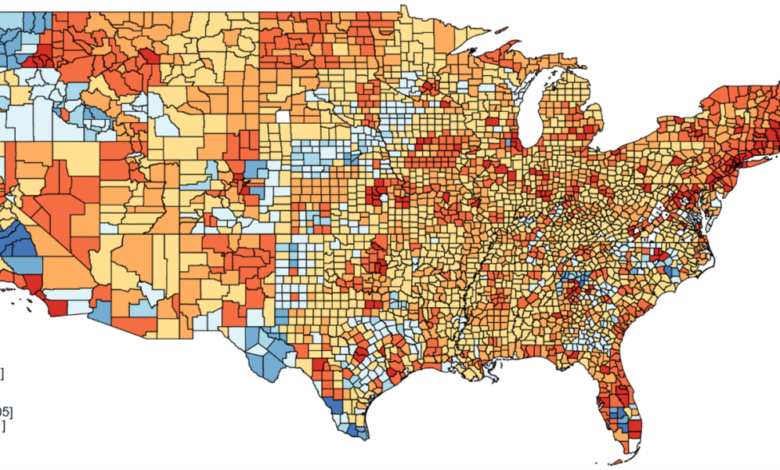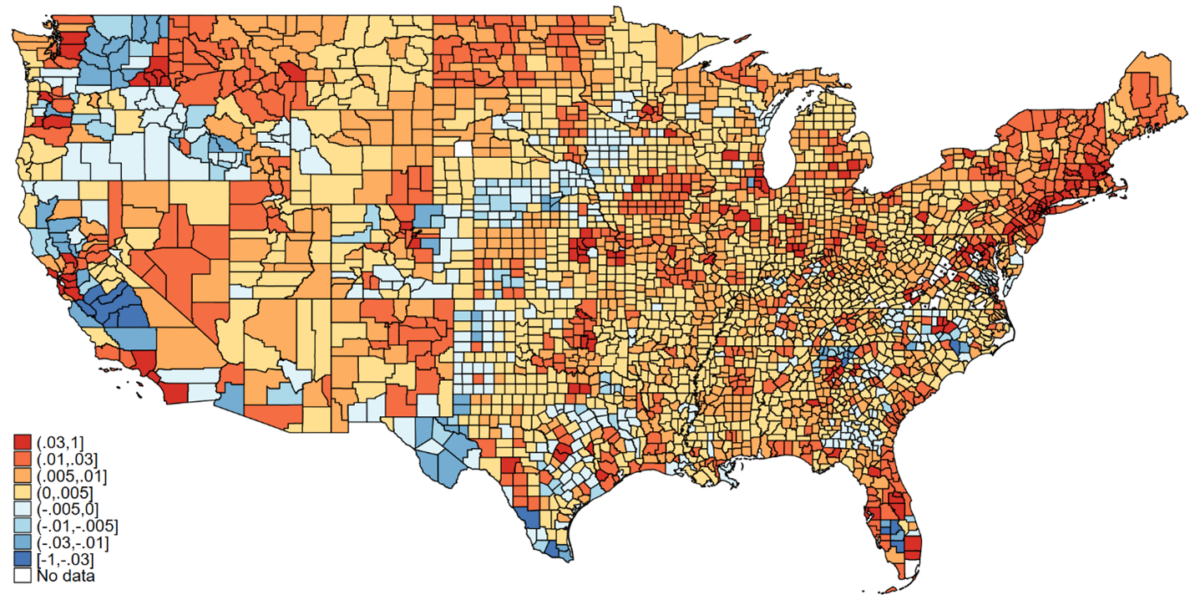Guest Contribution: “Immigration and US Shelter Prices: The Role of Geographical and Immigrant Heterogeneity”

Today we are pleased to present a guest contribution by James Cabral (University of Toronto) and Walter Steingress (University of Wisconsin). The views expressed are solely those of the authors, and do not necessarily represent the institutions they are associated with.
In recent years, many advanced economies have seen an increase in immigration, sparking discussions about its economic impacts, particularly on housing and rent prices. This short note presents a summary of our recent paper (Cabral and Steingress, 2024) on the effect of immigration on local house and rent prices in the United States.
1. Impact Channels:
There are various channels through which immigration can affect local house and rent prices.
- New immigrants arriving in the US need housing and thereby increase demand, which puts upward pressure on shelter prices.
- The magnitude of this demand shock will depend on the skill composition of immigrants as more educated immigrants tend to have higher incomes and can afford more expensive homes compared to less educated immigrants.
- The magnitude of this demand shock will depend on the underlying supply conditions of the local housing market. If immigrants arrive in a housing market where supply can expand, the impact on shelter prices will be muted relative to a housing market where it is more difficult to add homes.
2. Empirical Analysis:
Our empirical analysis is based on detailed county-level data for the period 1985—2019. To ensure a causal association between immigration and shelter prices, we employ a shift-share instrument based on the ancestry composition of residents in each US county following Terry et al (2023). This instrument leverages the composition of residents’ ancestry as well as the timing and size of the national inflow of immigrants from a country of origin matched to ancestry to predict current immigrant flows to a given county in the United States.
3. Main Findings:
- Immigration inflows equal to 1% of a county’s population are associated with a 3.5% increase in median housing prices and a 2.0% increase in rents.
- The impact varies significantly based on immigrants’ relative education levels and local housing supply conditions (see Figure 1).
- In the county with the most restrictive issuance of building permits receiving immigrants with the highest level of education, an immigrant inflow of 1 percent of the county’s population would increase shelter prices by 6-8%.
- In the county with the least restrictive issuance of building permits and the lowest level of education of immigrants, an immigrant inflow of 1 percent of the county’s population would reduce shelter prices by 0-2% relative to a county that received no immigrants.
Figure 1: Distribution of Estimated House Price Impact
Notes: The figure plots the average estimated impact of new immigrants across the sample period obtained from the estimates presented in column (3) of Table 2 in Cabral and Steingress (2024).
4. Overall Impact:
Armed with the estimated effects of immigrants on shelter prices and observed immigration flows, we can calculate the model implied contribution of immigration to observed changes in US shelter prices.
- The overall impact of immigration on shelter price growth is minimal, contributing less than 2 percent to the increase. The primary reason is that immigration only accounts for a small fraction of local population changes.
- When we apply our estimates to within-US population shifts and account for changes in counties’ educational composition, our model can explain 59% of the observed change in local house prices and 47% of the observed change in rent prices.
5. Conclusion:
Our analysis suggests that immigration to the United States has a significant but varied impact on local shelter prices, depending on local conditions and immigrant characteristics. The influx of immigrants serves as a useful tool to identify causal effects of population movements on shelter prices, providing insights into how both national and international population movements affect the local housing market. Overall, our results suggest that the main culprit of shelter price growth in the United States is within-country population movement across US counties.
This post written by James Cabral and Walter Steingress.
Source link





